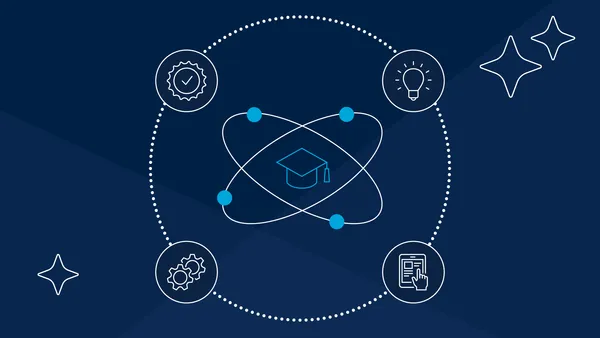This summer, we're digging into our archives for stories on current trends, challenges and opportunities in higher ed. This is our fourth installment of 2019. Read the first, second and third posts.
Last week, Amazon announced plans to "upskill" one-third of its U.S. workforce. It's unclear what, if any, role traditional colleges and universities will play in that effort, although the company is already working with community colleges across the nation on other education initiatives.
More broadly, though, the news reflects employers' need to retool their workforce as jobs automate, requiring a different set of technical abilities. By 2030, around 14% of workers worldwide will need to change up their skill set as a result of that shift, according to research from the McKinsey Global Institute.
Surveys show that employers willing to invest in this training, and that employees are interested in pursuing such learning on their own.
Colleges see an opportunity, too, particularly as stagnating enrollment threatens tuition revenue. Two- and four-year colleges are looking to expand their enrollment of these students, though the former may be better suited to doing so as they've long served working adult students.
In fact, two-year institutions can be instructive to four-year ones on how to target curriculum and support these students, who tend to have work and family commitments outside of school that can interrupt their learning trajectory.
Below, we've gathered our recent reporting about how all colleges can better attract and retain these students.
Higher ed administrators can better serve adult learners — here's how
Colleges are struggling to adapt to older students' needs, "finding themselves burdened by traditions and practices that prove ill-suited," writes Constance Iloh, an assistant professor at the University of California, Irvine, in the Journal of Student Affairs.
To serve these students more effectively, recruiting and retention experts recommend strategies like offering more credit for prior work and learning experience and providing support beyond the classroom, like child care and flexible schedules.
"Universities need to think, 'What's best for this type of learner?' rather than 'This is what we offer. Adult learners can take it or leave it,'" said Wayne Smutz, dean of the Extension program at the University of California, Los Angeles. Read more.
A study from Champlain College last year found that 72% of adult respondents thinking about returning to school already completed some college.
Colleges rethink student services for online learners
Public university systems are joining existing online mega-universities in a play to reach more adult learners online. But traditional, campus-based institutions aren't always equipped to provide the kind of tailored, on-demand support services these students need. However, they can help colleges compete in an increasingly crowded online marketplace.
"Establishing a point of difference in support will help attract new students," said Sue Ohrablo, a college advising consultant. "A popular phrase that's heard when discussing these strategies is 'concierge-level service.'" Colleges can take several approaches to providing that support. Read more.
As higher ed eyes adult learners, community colleges add supports
"About 80% of community college students say they want a degree, but only about 20% complete it. Life gets in the way," said Josh Wyner, vice president at The Aspen Institute and founder and executive director of its College Excellence Program. Aware of this drop-off, colleges are looking to give students more structure to help them stay enrolled through graduation.
One way they are doing so is through guided pathways and related supports, which can give students "real momentum toward their degree and beyond," Wyner said. Research backs the use of this method to keep students on track, which includes benchmarks like requiring them to choose a major at a certain point in their studies.
To be successful, however, colleges must look beyond pathways and embed reinforcement throughout the institution. Read more.
Pasadena City College, in California, improved advising by increasing focus on course selection and pathways for graduation and transfer.














